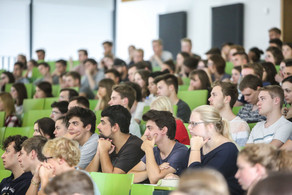Locate cars with traffic lane accuracy – the results of a dissertation show how it works…
- News
It determines occurring failures based on a 3D-modell of the system surroundings and the detailed consideration of satellite system characteristics in a specifically made Open Source Satellite Simulator (OS3). Using cloud-based resources it is possible to compensate most of the occurring failures as well as using them for embedded systems. The system concept was experimentally transcribed and validated by means of Software-Defined Radio platforms. Mr. Niehöfer demonstrates the practical applicability of the approach on the basis of two detailed case studies. Beginning the work the availability of high precision 3D-maps was utopian, today such maps are considered essential basis of autonomous driving.
The dissertation is develpoed within the scope of the DFG Collaborative Research Center SFB 876 "Providing Information by Resource-Constrained Data Analysis" and provides contributions to subproject B4 "Analysis and Communication for Dynamic Traffic Prognosis".






